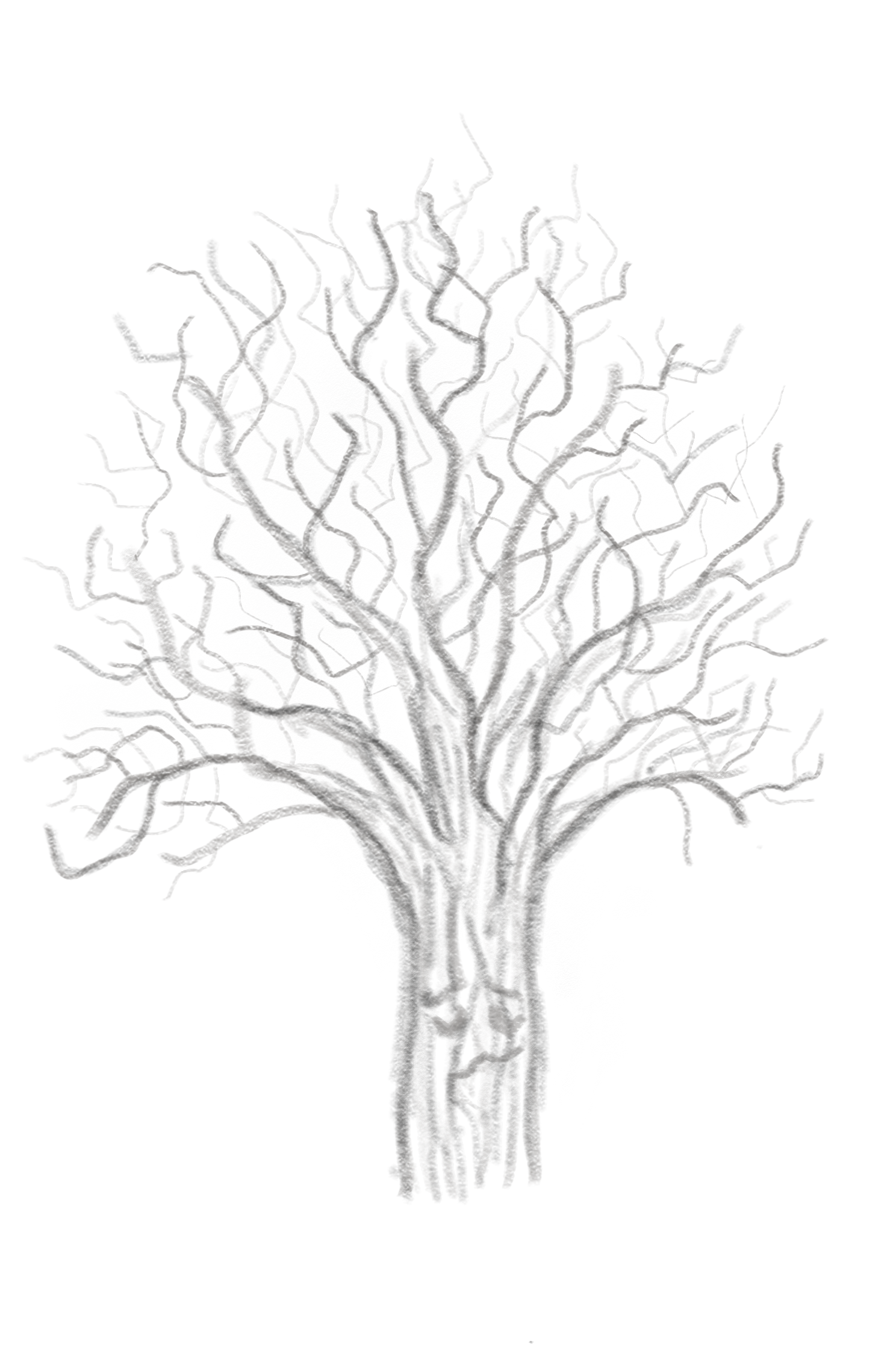Under Tension
October 20, 2023
 Dila Cakir
Dila CakirBowdoin’s maple trees drop their leaves to rest just as students hunker down to work. When will we stop to rest?
Every tree in Brunswick pauses its productivity in the winter to protect itself before returning to work in springtime. Winter cold is too stressful for photosynthesis, and water freezes in its pipes. Every day of the productive season, a tree puts tension on its tiny xylem pipes to pull water up to its leaves. When cold temperatures freeze the water in one of these pipes, the water column snaps like a rubber band upon thawing, and no amount of tension can pull it back together. A snapped column draws no water. If a tree with one or two snapped columns keeps on chugging, it puts greater tension on the pipes that remain. Under higher tension, these pipes then face a greater risk of meeting the same snapped fate as their peers. So before getting back to work in the spring, maple trees will take the time to heal their broken pipes.
To heal, the maple trees have to reverse the direction of their water flow. When the trees are productive, they are pulling on water. In spring, maples turn things around and push sugar water through their vessels. As they push loads of sugar into their pipes, sweet springtime sap presses each water column back together. Recovered, the trees are again able to pull water up from the ground and produce a canopy of leaves. They have made a healing reversal.
We have to make similar reversals in order to recover, though it feels counterproductive.
In the midst of midterms, I woke up with a sore throat. I feared what was to come but did not make a contingency plan. I kept pulling myself through my assignments, racing against the clock. “I’m strong,” I thought, “I’m diligent,” as I pulled and pulled, drawing upon my winnowing willpower. Could I pull together a week’s worth of work before I gave out entirely? No.
I got worse and worse until late one night, I was too sick to leave my room. I finally wrote to my professors and gulped down sugary water: ginger tea with honey, mint tea with honey, antibiotics with water. My friend delivered me food. I switched gears from working to healing. Finally, after a few full-on sick days, I began to feel like myself again.
As normalcy returned, just leaving the house felt delectable. I was excited to return to my old study spots. I was excited to work! Maybe it was because I was well-rested, or maybe the same old Kanbar couch felt fresh. Either way, recovery had sweetened my bland routines.
In sugar maple trees, there is a sweetness that comes with healing. The sugary sap that they press through their vessels has a delicious taste. We take that sap, boil it down and douse our pancakes with it. Without the maple trees’ recovery cycle, my pancakes would be as dry as my study routines. I seek out the taste of a maple’s recovery, yet I often do not pursue the sweetness of my own. Instead of recovering, I keep working.
Working while sick is a common problem in the workforce. Psychologists call it presenteeism, and their studies confirm that we hurt our mental health when we come to work sick. Presenteeism leads to greater exhaustion and greater depersonalization. If you have not heard of depersonalization, how about burnout? Depersonalization and exhaustion are key pieces of the burnout puzzle. Mental health aside, presenteeism may slow down our physical recovery by keeping us from rest. Yet, we keep choosing to work while we are sick because we want to deliver.
It can feel wrong to take care of ourselves. I pride myself on my diligence. To rest in the face of a deadline seems to oppose my goals. How can I justify a total reversal from work to recovery? Sugar maple trees reverse their flow every year. Despite putting in similar productivity each spring, maples manage to produce a crown of leaves before their oaken peers. While the oaks are slowed down by their still-damaged water columns, the healed sugar maples jump into action. We identify these resilient maple trees by their healing process: Acer saccharum (“Sugar Maples”). I, too, can identify with healing. We can identify as hard workers and self-carers. Maple sap flows both ways, and so do we.
If you look around you and think that no one else is stopping to rest, you have probably been fooled by the apparent presenteeism of the evergreen trees. Conifers may keep their needles through winter, but they do not photosynthesize when it is cold. Evergreens rest, too, like deciduous trees do. Photosynthesis is stressful at low temperatures in any tree. Deciduous trees make their rest more public than their evergreen peers. I am inspired by the deciduous sugar maples who rest publicly and proudly, who identify with healing and who make sweet sap each spring. Without recovery, life would be a very dry pancake.

Comments
Before submitting a comment, please review our comment policy. Some key points from the policy: